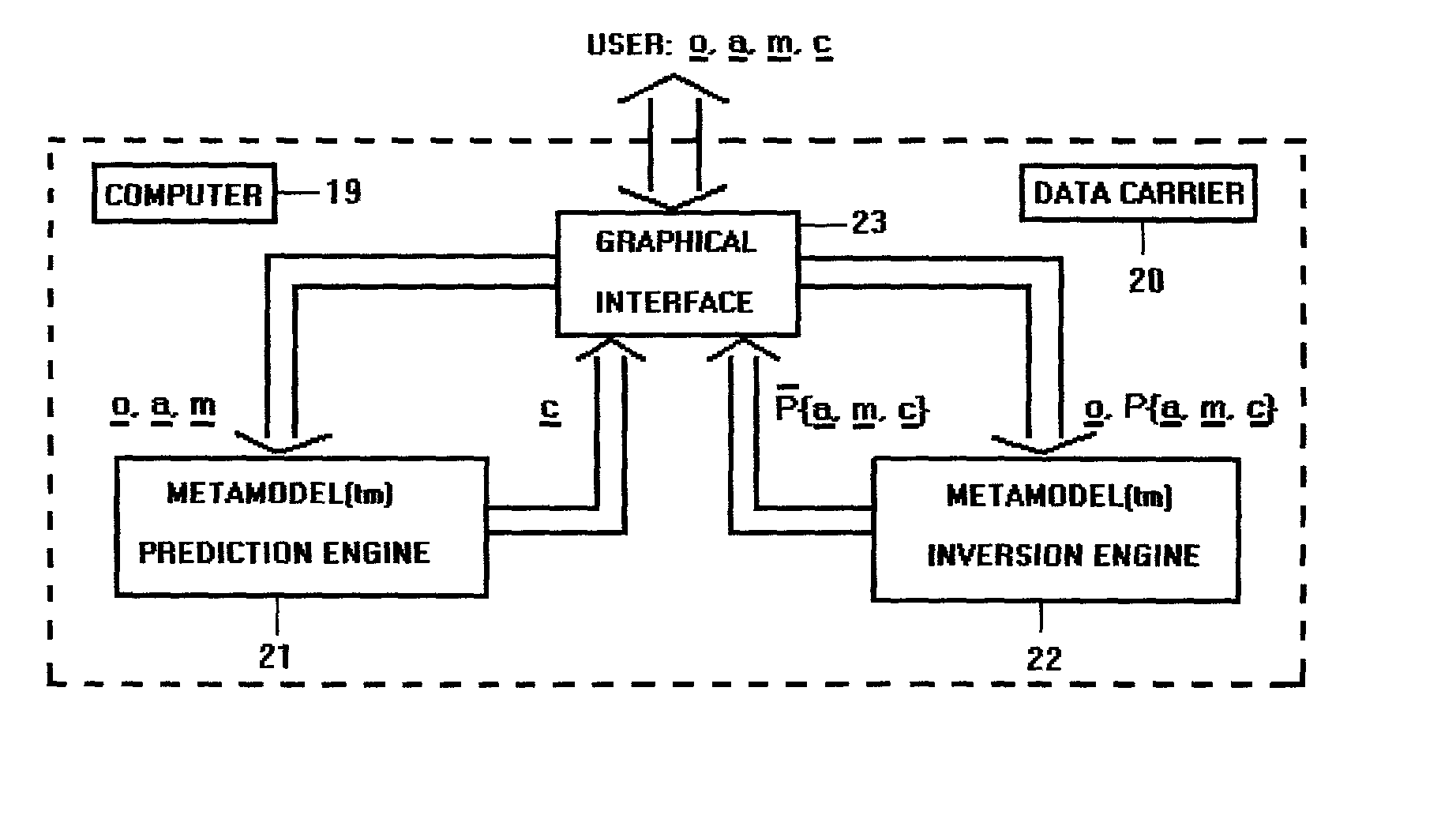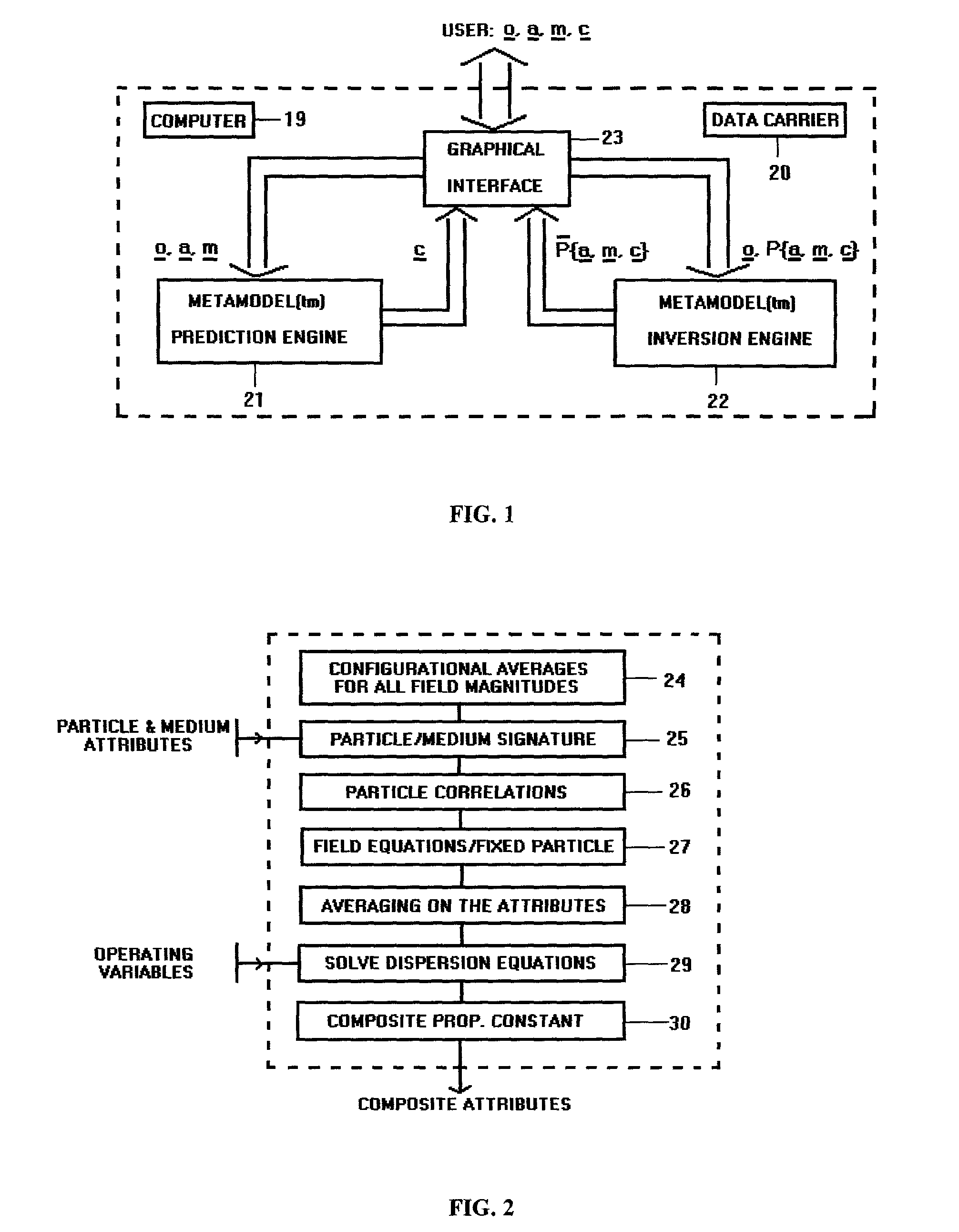Fundamental method and its hardware implementation for the generic prediction and analysis of multiple scattering of waves in particulate composites
a technology of multiple scattering and fundamental methods, applied in multi-objective optimisation, instruments, computations using denominational number representations, etc., can solve the problems of inability to build pre-built modeling blocks for inability to accurately predict multiple scattering waves in particulate composites, and inability to meet the mathematical rigor and ample validity range of a first-principal approach
- Summary
- Abstract
- Description
- Claims
- Application Information
AI Technical Summary
Problems solved by technology
Method used
Image
Examples
Embodiment Construction
[0026] Detailed Description / Operation of the METAMODEL.TM. Engines 21 and 22
[0027] An essential part of this invention is a generic fundamental mathematical model to predict the interaction between a generic wave (acoustic, electromagnetic, elastic) and a dense generic particulate system (fluid or solid particles included in fluid or solid media). Two numerical engines operate around this mathematical model. The Prediction Engine 21 starts with the operating attribute vector o, the attribute vector m of the host medium, and the attribute vector a of the particles to predict the attribute vector c of the composite (FIG. 1). Vector o contains operating parameters like frequency, temperature, scattering angle, etc. Vector m contains all the physical properties for the suspending medium. Vector a comprises of all the physical properties for the material of the particles plus the particle size distribution and concentration. Some of these properties can be frequency-dependent (e.g. for n...
PUM
| Property | Measurement | Unit |
|---|---|---|
| sizes | aaaaa | aaaaa |
| frequency | aaaaa | aaaaa |
| size | aaaaa | aaaaa |
Abstract
Description
Claims
Application Information
 Login to View More
Login to View More - R&D
- Intellectual Property
- Life Sciences
- Materials
- Tech Scout
- Unparalleled Data Quality
- Higher Quality Content
- 60% Fewer Hallucinations
Browse by: Latest US Patents, China's latest patents, Technical Efficacy Thesaurus, Application Domain, Technology Topic, Popular Technical Reports.
© 2025 PatSnap. All rights reserved.Legal|Privacy policy|Modern Slavery Act Transparency Statement|Sitemap|About US| Contact US: help@patsnap.com



